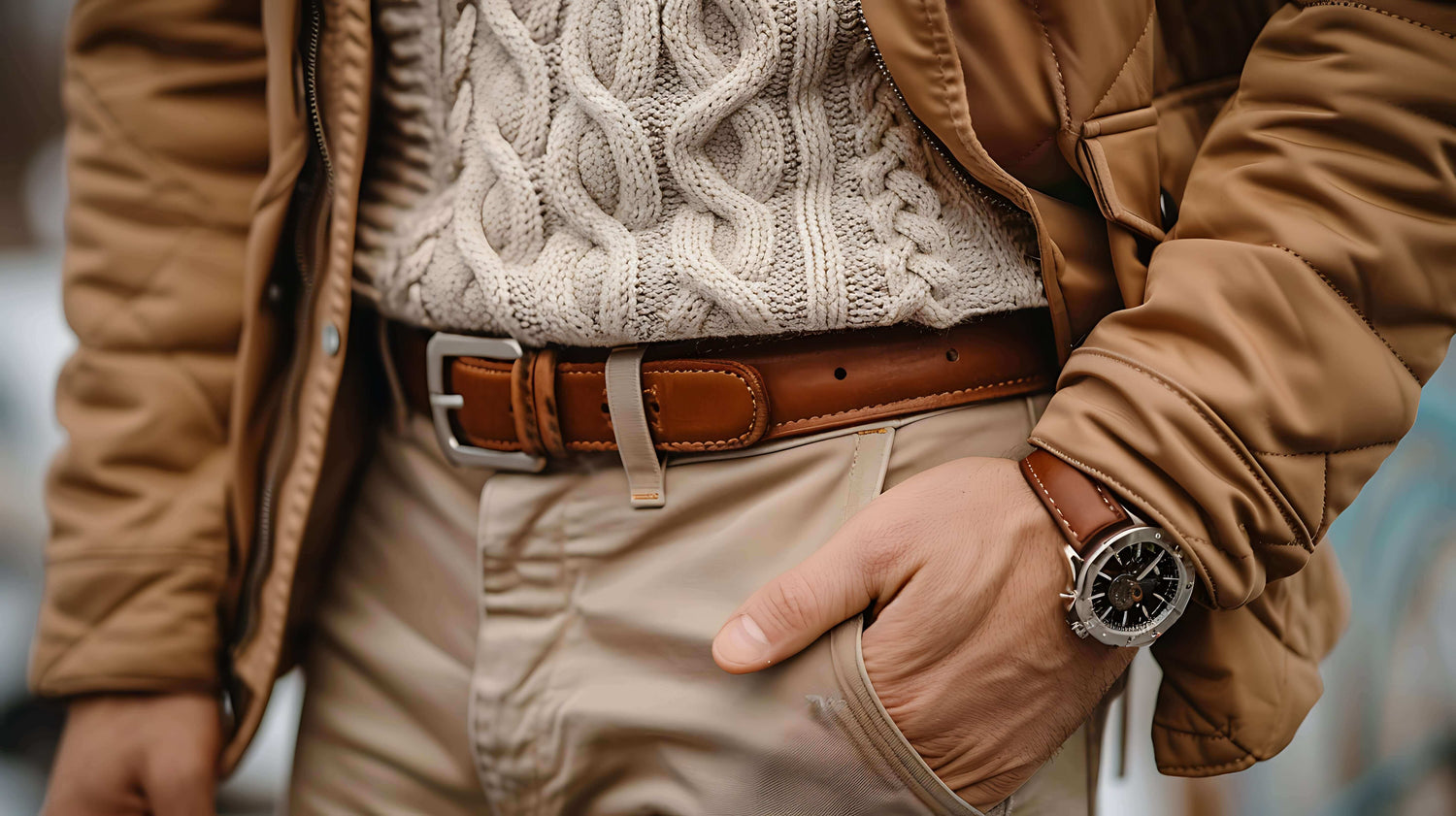Police belts are an important part of police equipment and are more than just an ordinary belt. The design and function of a police belt has been carefully considered to provide the support and convenience that police officers need in the performance of their duties. This article will provide background and conclusions on police belts to help readers better understand this critical piece of equipment.
Background of Police Belts
Police belts originated in the 19th century when police officers needed a convenient way to carry tools and weapons. Belts were designed with the needs of police officers in mind, allowing them to carry a variety of equipment such as handcuffs, guns, tasers, and more. Police belts are usually made of high-strength materials to ensure their durability and reliability.
What is a Traditional Belt?
In the current market, most multi-functional belts consist of two parts - the outer belt and the inner belt.
The outer belt serves as the interface for carrying equipment and is crucial for bearing the weight of the gear. Commonly made of composite nylon/nylon or leather, these belts are not only durable but also capable of withstanding harsh and demanding environments. Additionally, the outer belt incorporates plastic support plates that effectively distribute the weight of various equipment, up to 5kg, evenly on the pelvic bone, providing a comfortable and effortless wearing experience.
The inner belt is usually made of lightweight and flexible materials, prioritizing comfort above all else.
The Upgraded Tactical Belt
The new generation of tactical belts eliminates the distinction between inner and outer belts. They are made from modified nylon material, molded through injection molding, and exhibit excellent environmental adaptability. These belts can reliably function in temperatures ranging from -30°C to 40°C. Furthermore, they possess good chemical resistance, remaining unaffected by oil, acid, alkali, and other chemical substances, without softening, fading, or deforming. The inner part of the belt is filled with flexible padding, reducing friction between the belt and the wearer's body. This design ensures even distribution of the equipment's weight, resulting in a more comfortable and relaxed wearing experience.
Traditional Wearing Method
Traditional belts require adjusting the internal Velcro to achieve the wearer's desired size. However, even after adjustment, there may still be a sense of discomfort during movement. Furthermore, readjusting the belt can be quite troublesome.
Upgraded Wearing Method
The new generation of tactical belts features a simple wearing method. The rear part of the belt has an adjustable size design. Lightly pressing it relaxes the size, while inward pressure reduces the size. This simple and easy adjustment can be done without removing the belt, allowing unrestricted movement such as jumping, squatting, sitting, bending, and rotating.
Traditional Equipment Pouches
Let's talk about our equipment pouches. Traditional accessory packs are supported by composite nylon/nylon and attached to the belt using Velcro. Each accessory pack has a different opening, including buttons and Velcro. While they provide some anti-loss functionality, they are not particularly efficient or quick.
Upgraded Equipment Pouches
The new generation of tactical belt pouches features a quick-release mechanism, allowing for easy retrieval of the required equipment with a single pull. This significantly enhances operational efficiency. Additionally, these pouches can rotate 360°, allowing for customization based on individual usage habits.
Conclusion of Police Belts
Police belts are an integral part of police work. It provides convenience and security, enabling police officers to perform their tasks effectively. By securing a variety of equipment and tools to the belt, police officers can quickly access the items they need without having to search for them in an emergency. In addition, the Police Belt is designed with police comfort and freedom in mind to ensure that they can move and act with ease.
In conclusion, police belts are a crucial part of police work. Its background and conclusion demonstrates its importance and function. By understanding the design and purpose of police belts, we can better understand the working environment and needs of police officers.
Popular Blogs:
What are some of the upgrades that have been made to police belts: It discusses the history and function of police belts.It also discusses the upgrades that have been made to police belts. Some of the upgrades include a new wearing method and new equipment pouches.
Are Tactical Belts Good? Benefits and Advantages of Using Tactical Belts: It discusses whether they are worth it and their benefits and advantages.Tactical belts are durable, versatile, comfortable, and provide quick access to essentials.They are a good investment for anyone who spends a lot of time outdoors or needs quick and easy access to their gear.
What Is a Rhinestone Belt and How Can You Style It: It discusses what they are, different types of rhinestone belts, and how to style them.Rhinestone belts are belts with sparkling stones that can be used to spice up your everyday style or for a special occasion.There are many different types of rhinestone belts, including western, wide, bridal, and skinny. You can style a rhinestone belt with any clothing style, but it is important to consider the occasion and your outfit when choosing a belt.
Always the Perfect Fit: Why You Need a Slide Belt in Your Wardrobe:
It discusses the limitations of traditional belts and the benefits of slide belts.Traditional belts can cause discomfort and limit movement. Slide belts offer a perfect fit and versatility. Slide belts are durable and can be customized.
Celebrity Style: How A-listers Are Rocking Leather Belts This Season:It discusses how they are being used in different ways.Some of the important points are that leather belts can be used to add a touch of edge to a classic look, they can be used to create a statement piece, and they can be used to add a touch of character to an outfit.


